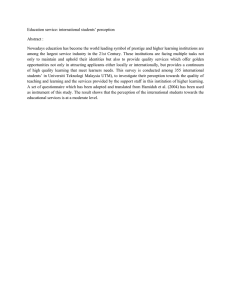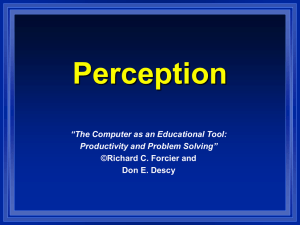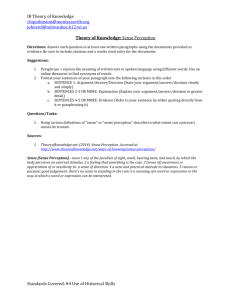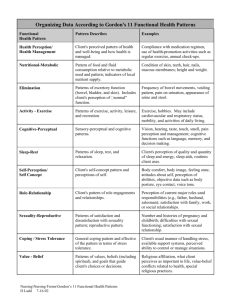docx - NACSETAC
advertisement
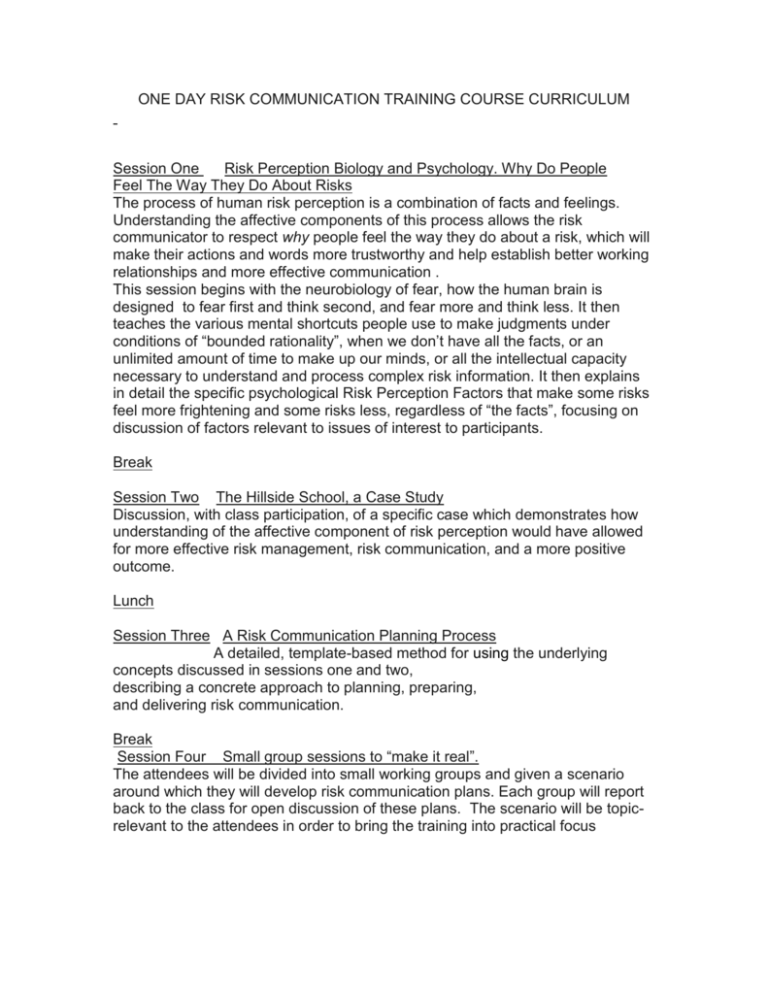
ONE DAY RISK COMMUNICATION TRAINING COURSE CURRICULUM Session One Risk Perception Biology and Psychology. Why Do People Feel The Way They Do About Risks The process of human risk perception is a combination of facts and feelings. Understanding the affective components of this process allows the risk communicator to respect why people feel the way they do about a risk, which will make their actions and words more trustworthy and help establish better working relationships and more effective communication . This session begins with the neurobiology of fear, how the human brain is designed to fear first and think second, and fear more and think less. It then teaches the various mental shortcuts people use to make judgments under conditions of “bounded rationality”, when we don’t have all the facts, or an unlimited amount of time to make up our minds, or all the intellectual capacity necessary to understand and process complex risk information. It then explains in detail the specific psychological Risk Perception Factors that make some risks feel more frightening and some risks less, regardless of “the facts”, focusing on discussion of factors relevant to issues of interest to participants. Break Session Two The Hillside School, a Case Study Discussion, with class participation, of a specific case which demonstrates how understanding of the affective component of risk perception would have allowed for more effective risk management, risk communication, and a more positive outcome. Lunch Session Three A Risk Communication Planning Process A detailed, template-based method for using the underlying concepts discussed in sessions one and two, describing a concrete approach to planning, preparing, and delivering risk communication. Break Session Four Small group sessions to “make it real”. The attendees will be divided into small working groups and given a scenario around which they will develop risk communication plans. Each group will report back to the class for open discussion of these plans. The scenario will be topicrelevant to the attendees in order to bring the training into practical focus
